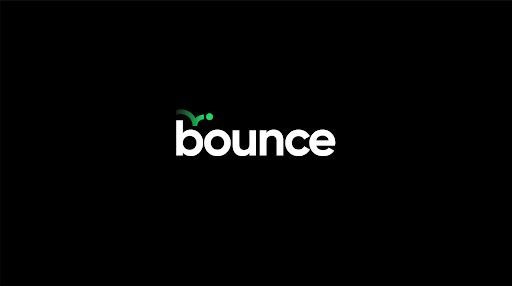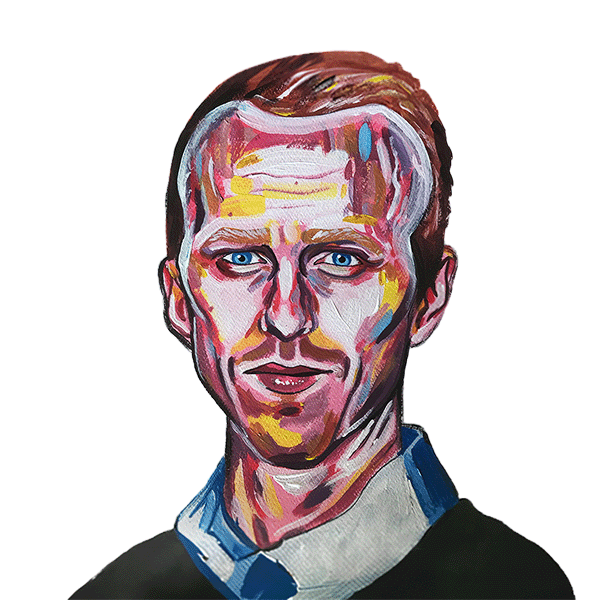Bounce: A Place For Spotifiers To Go, Know And Do

In a world where conformity is often the norm and tradition provides a cosy security blanket, daring to carve out a new path can feel like ordering pineapple on a pizza in Italy. It takes guts. You need to be bold. Ralph Waldo Emerson put it best when he said “do not go where the path may lead, go instead where there is no path and leave a trail”. If you think of every groundbreaking product, from the wheel to pineapple on a pizza, they were all once a spark in someone’s wild imagination. These ideas aren’t just colouring outside the lines; they are inventing a whole new colouring book.
Our first spark was Disco, then there was Scout. Well, get yourself comfortable, because this time we’ve got something big. It’s a new type of platform that no one has ever seen before. We’d like to introduce you to Bounce. A place to go, know and do.
Describing what Bounce is, is actually a tricky thing to do. Not because it has some obscure use case, or it’s so complex that you couldn’t work out what it is. But with anything new, it’s human nature to compare it to something that we already know to help with understanding. In the context of audio production the term “bounce” refers to the process of rendering or exporting a finished or mixed audio project into a single audio file. It comes from the hardware analog era when physical tape machines were not easy to count tracks, but engineers were able to mix numerous tracks into one to save space. The main idea is taking all of the musical elements and effects and combining them into one single file. And that’s a big part of what Bounce does – it brings lots of individual elements together into one place.
One way we could describe Bounce is as a new type of intranet. We all know what an intranet is, but no one has ever got excited when they hear the word intranet. The cousin of the internet, where information goes to retire. We could describe it as an employee experience platform that brings together disparate apps to give employees a single portal and knowledge management interface. There’s been a plethora of these recently in the market, but all a little functional looking and not the most inspiring user experience. Or we could describe it as a new type of employee comms platform, but that gives it a very singular use case. The reality is Bounce is all three but none of them at the same time. Bounce creates its own new space that we think will become the standard.
So what is this new space? Well, Bounce is Spotify for the workplace in a certain sense. What do I mean by that? Well, at our last investor day we introduced this idea of the Spotify machine. Put simply, the machine has three horizontal functions. We have a platform layer, which is the Spotify technology platform. We have the Spotify experience layer, which is all the applications, surfaces, mobile apps, cars, and desktops. Then we have a personalisation layer which is how we decide what content to recommend to what user. These three horizontals act as a synchronisation function. We then have the verticals: music, podcasts and most recently audiobooks, which are all very different content types. Now, what these three horizontal functions, or synchronisation functions do, is eat through all of the complexity that these different content types produce so that that complexity doesn’t end up with the end user. The end user is left with a single platform that has all of these different content types but that work in harmony and co-exist in a way that produces a great user experience. In turn each of those content types gets to take advantage of the capabilities of the platform e.g. personalisation, ubiquity etc.
Bounce is that Spotify machine but built for workplace content. The horizontals in Bounce are a platform layer that connects to any internal system that not only consumes its content but can also write and edit content directly in that system. Think of all those times when you’ve needed to do something and had to open up different tabs or screens to read instructions on one and enter the information in another. That is now a thing of the past. An experience layer that gives the same user experience regardless of content type. Just think about how significant that is for a second. Think of your HR platform, your knowledge platform, your comms platform etc. and how different they are. Imagine using them and they all felt like they were the same system. That’s what Bounce can do. And then there is how it looks. Think if Spotify designed business software and what’s in your imagination is somewhere close. The last layer we have is the personalisation layer. So not only is there all of this different content, with a single user experience, but it’s personalised at an individual level so the experience is optimised for every individual employee. And we don’t mean on some superficial level, we mean every piece of workplace content optimised to make sure it is seen by the people who need to see it, when they need to see it. That could be when someone joins the band or starts a new role, is about to go on parental leave, or a timely communication that’s specific for your business unit. The list is endless.
If you sat next to someone right now and you both opened your Spotify app, unless you have identical usage and taste, your app looks the same, but the content that is presented to you will be different so that your experience in the app is optimised to maximum effect. Bounce does the same.
Providing employees with a single place to go that interfaces with different applications isn’t new, it’s been done many times. However, the personalisation layer is something that has never been done before, and that’s exactly why we’ve created Bounce. The ultimate success and potential of people analytics is a capability so powerful, so influential, so embedded in the organisation, that many people don’t even know it’s there. The most profound effect that people analytics can have in an organisation is on the experience of its employees. That experience can be at whatever interval: on-boarding, talent development, diversity and inclusion, employee wellbeing, or simply getting something done. To date, people analytics, even the best functions, produce an output that is then taken as an input into a decision making process. And when people talk about people analytics they talk about it in terms of a maturity curve. You know the one. The one consultants sell you. It usually starts with labels like descriptive analytics and you should strive for the end of the curve which is usually labelled with something like prescriptive. When you frame people analytics as something that produces an output that goes into a decision making process then this curve makes sense. You’re progressively improving the quality of your output so it has a bigger role in the decision making process. And this role will always exist, but the potential of people analytics is so much more than one of those curves. Imagine impacting the employee experience, live, in the moment, for every single person in the organisation. And it’s in the fabric of how everything works.
People analytics is not an input into a decision, it’s the personalisation engine of your organisation. It just needed a platform. We take all of the information we have on our employees and use it to optimise their experience at work. If a band member needs to go somewhere, Bounce gets them there fast. If they need to know something, Bounce curates the content specifically for them so they don’t need to go looking. If they need to do something, Bounce gives them a consistent user experience regardless of the task. Bounce is the future state of people analytics that you won’t find at the end of a curve.
Back to Ralph’s quote, the trail we leave is a new way to think about employee experience and how to impact it. How you can repurpose your technology strategy and embed people analytics at the heart of your employees day to day. As we now launch Bounce, the path a band member walks in the platform is unique to them. Two people starting on the same day, no longer go through an onboarding experience, they go through their onboarding experience. As we say when you login into Bounce: Welcome to the band, it’s time to write your song.



